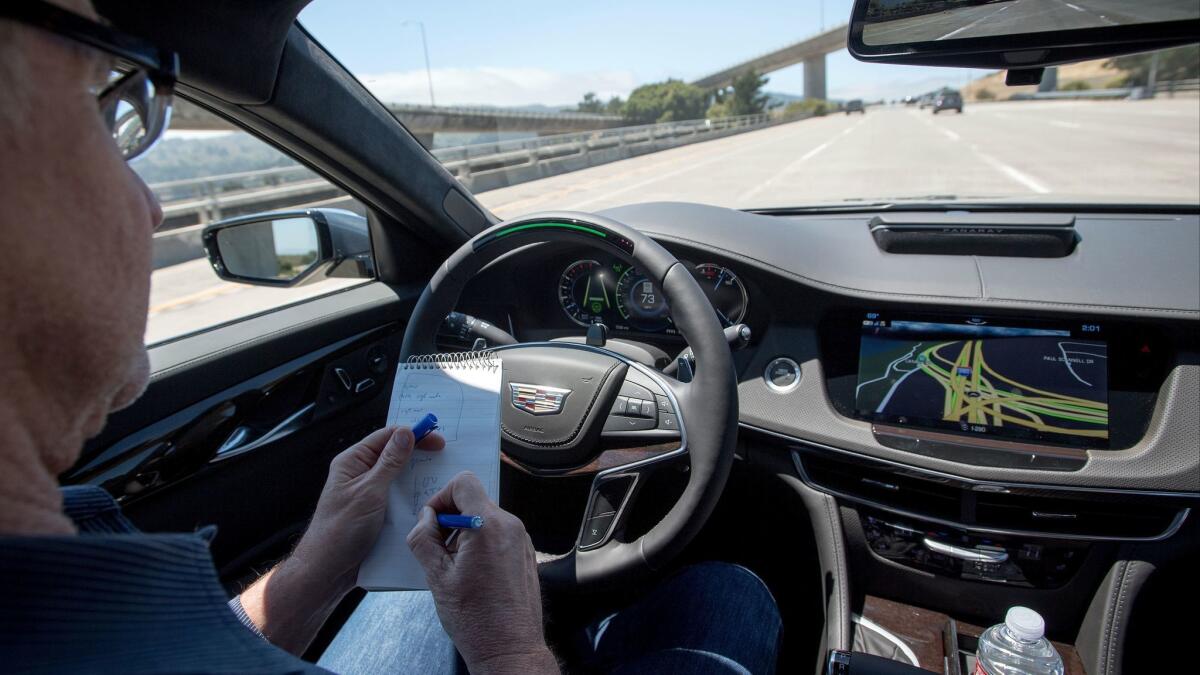People are still wary of self-driving cars, but reluctance drops after they try driver-assist features, study says

Reporting from San Francisco â Most people still say they wouldnât buy a self-driving vehicle, but they become far more open to the idea after they try cars with automatic driver-assist features.
Thatâs according to a survey conducted by global consulting firm AlixPartners.
Only 18% of those surveyed reported personal experience with driver-assist features such as automatic braking, lane keeping and adaptive cruise control. Among those, 49% said they are âconfidentâ or âvery confidentâ of driverless cars, 21% are neutral and 31% are not confident.
Of respondents with no experience with self-driving features, only 28% said they were confident or very confident of driverless cars.
âWhen people get experience with these technologies, they really do get more confident,â said Mark Wakefield, a managing director at the firm.
When people get experience with these technologies, they really do get more confident.
— Mark Wakefield, AlixPartners
In his experience, the conversion is quick. âIt must be something about how the brain works. Once the car makes a few turns on its own, people become very comfortable with it. Maybe too comfortable.â
Although todayâs self-driving features can handle a wide variety of driving conditions, there remain plenty of âcorner cases,â or complicated situations that self-driving cars canât handle. Thatâs why most automakers are taking a gradual approach to development, and why drivers are expected to pay full attention, even when a car is driving itself.
Cost may be a problem, though. People who say theyâd buy vehicles with driverless technology say theyâd pay, on average, $2,600 more. Even assuming widespread popularity and economies of scale, Wakefield said, the option would cost at least hundreds of dollars more than that.
Twitter: @russ1mitchell
ALSO
BMW plans 25 all-electric and hybrid vehicles by 2025; Jaguar shows off electric E-type
Public dumps on Trump plan to reconsider automobile fuel economy standards
House passes bill to help self-driving cars hit the road sooner







